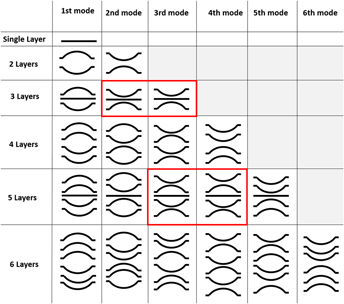Article contents
Characterization of optomechanical modes in multilayer stack of graphene sheets
Published online by Cambridge University Press: 26 October 2017
Abstract

Graphene, a two-dimensional (2D) crystalline material exhibits unique electronic, optical, and mechanical properties which makes it a promising candidate for optomechanical and optoelectronic devices. The giant plasmonic activity of graphene sheets enables low-dimensional confinement of light and enhanced light–matter interaction leading to significant enhancement of optical forces which may give rise to large mechanical deformations on account of ultralow mass density and flexibility of graphene. The multilayer stack and heterostructures of 2D materials provide access to a spectrum of guided modes which can be used to tailor the optical forces and mechanical states of graphene sheets. Here, we study the optical forces arising from the coupling of guided modes in layered structures of graphene sheets. We obtain the mechanical deformation states corresponding to each guided mode and demonstrate that the optical forces can be adjusted by changing the interlayer spacing as well as the chemical potential of graphene layers. Our results can be used for various designs of graphene-based optomechanical devices.
Information
- Type
- Invited Feature Paper
- Information
- Copyright
- Copyright © Materials Research Society 2017
Footnotes
Contributing Editor: Gary L. Messing
This paper has been selected as an Invited Feature Paper.
References
REFERENCES
- 4
- Cited by


